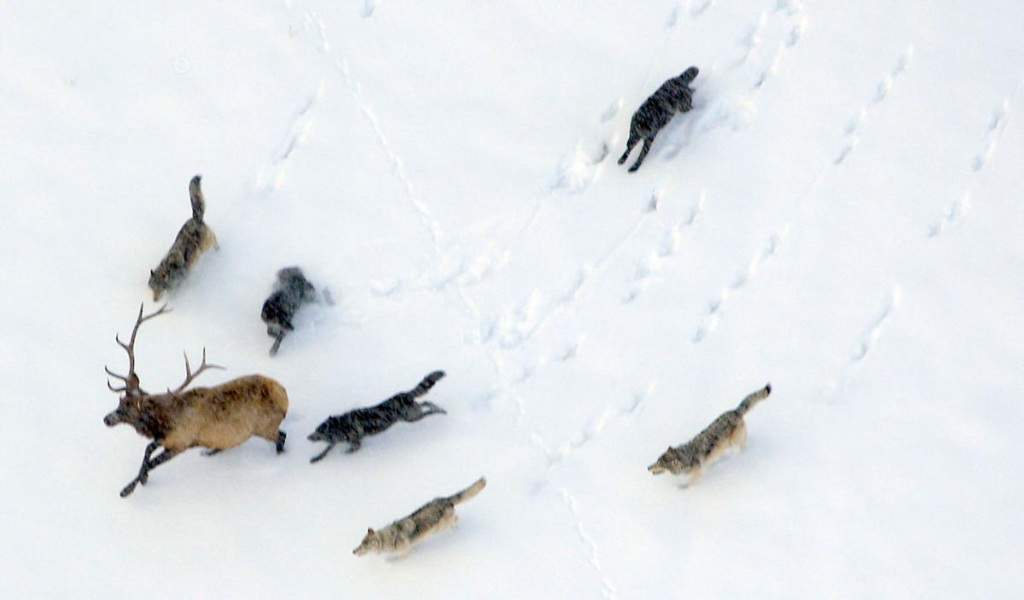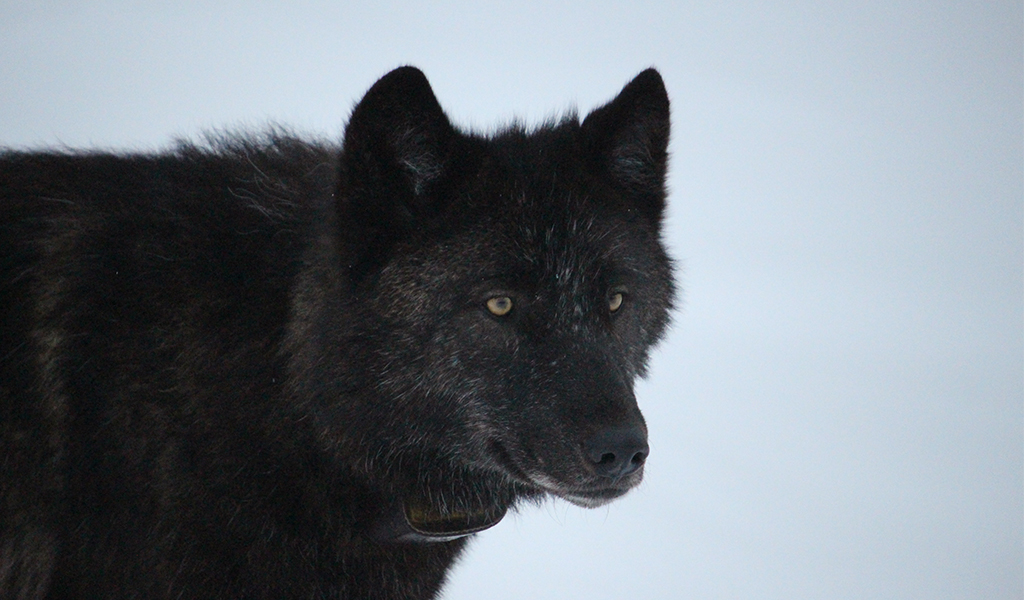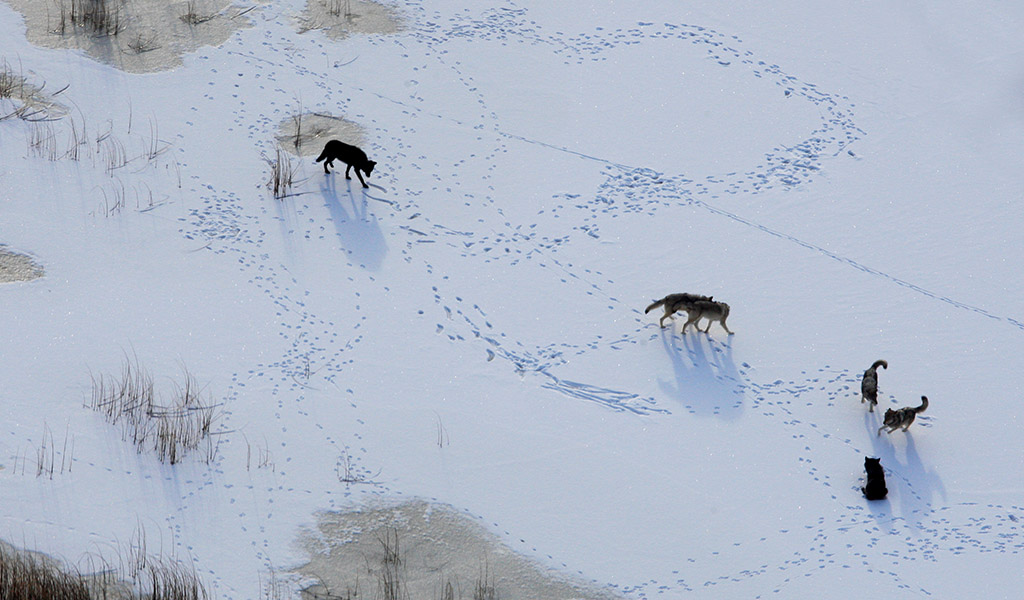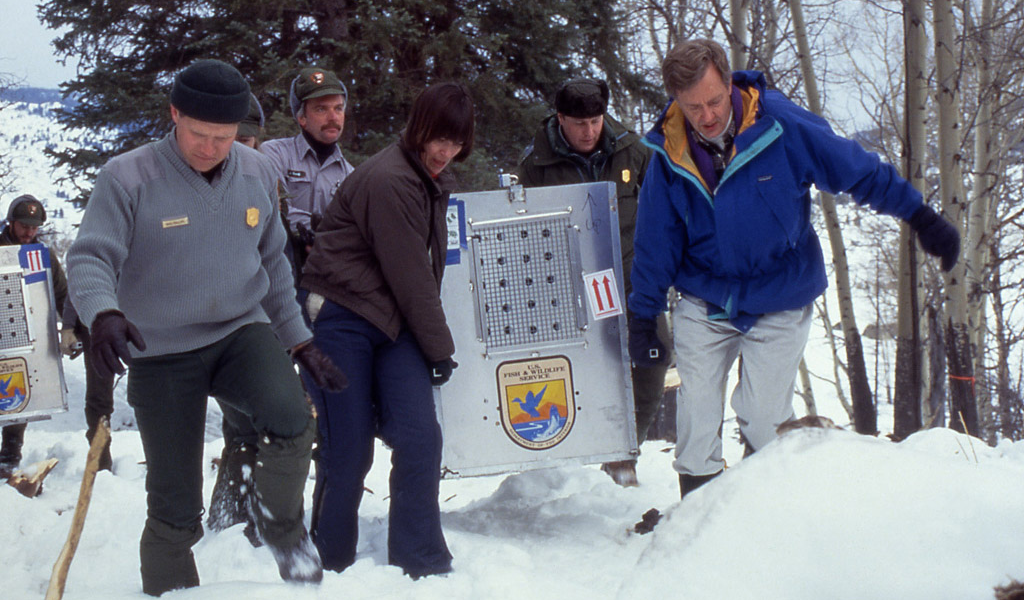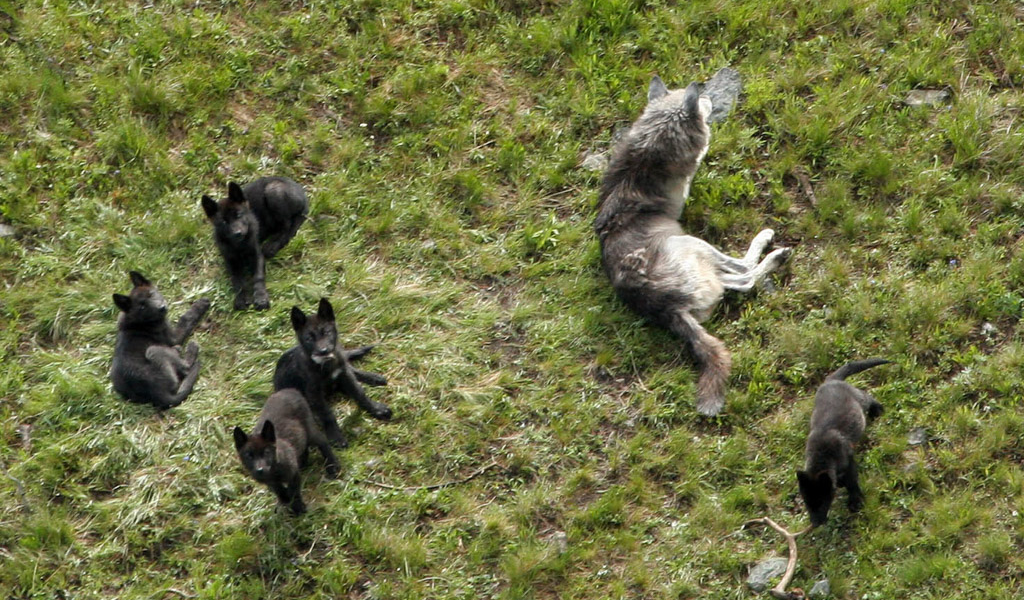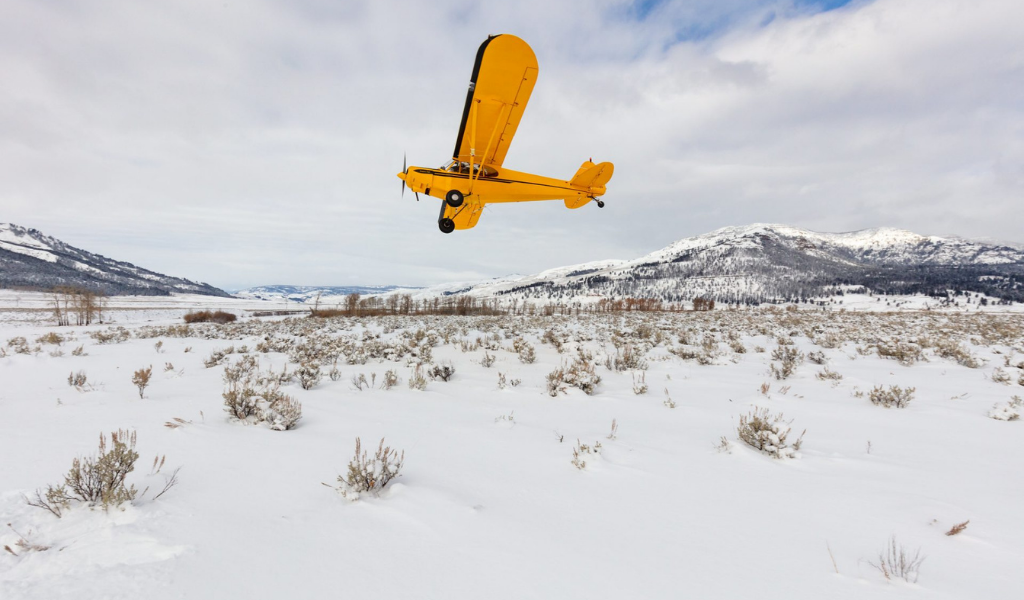The Yellowstone Wolf Project is one of the most detailed studies of a large carnivore in the world, spanning nearly 30 years since wolves were first reintroduced to the park in 1995. Year-round field research helps biologists gain data on a broad range of topics, including population dynamics, predator-prey interactions, social behavior, genetics, disease, multi-carnivore competition, ecosystem impacts, and human-wolf relationships. Collectively, this work serves the park’s mission to understand and preserve native species and ecological processes and informs wolf conservation efforts worldwide.
Yellowstone Forever is raising critical funds needed for these efforts: GPS collars cost $2,500 each and VHF (Very High Frequency) collars cost $600 each. Funds raised will also be used for monitoring flights which are key to locating wolves in Yellowstone’s vast wilderness.
Project Overview
Knowledge of Yellowstone’s wolf population and their role in the ecosystem requires year-round monitoring and research. Using skilled field staff and emerging technologies, we are able to collect vital data using the following methods:
- VHF and GPS collaring of wolves
- Ground observations and telemetry monitoring by skilled field staff
- Aerial monitoring flights and GPS satellite data
- Population, pack composition, and pup counts
- Genetic analyses and disease testing
- Seasonal predation studies
- Behavioral studies
- Territory use and multi-species interactions from VHF/GPS collar data
The Yellowstone Wolf Project relies on the funding from Yellowstone Forever’s members and corporate partners to continue this crucial research on Yellowstone’s wolves.
To hear a wolf howl with all the answering howls was something I’ll never forget. This is why we continue to give. That’s an experience too few of us have and must be preserved. – Tim S., Connecticut
New Bioacoustic Study
The Wolf Project team recorded over 900 howling events in the summer and fall of 2023. This innovative new study includes:
- Deploying autonomous recording units (ARUs) to monitor the presence, distribution, and numbers of wolves across the park.
- Creating effective data collection protocols and AI models for bioacoustic research in Yellowstone and beyond.
- Providing fundamental research towards a better understanding of animal communications.
History
The wolf, one of Yellowstone’s most important predators, roamed the landscape and influenced the ecosystem for thousands of years. By the late 1920s, wolves were eradicated from Yellowstone in an effort by the U.S. government to tame the wilderness. Along with the removal of other carnivores like cougars and bears, this action had a profound effect on Yellowstone. In the absence of carnivores, elk numbers boomed which resulted in significant changes in vegetation. Beavers became increasingly rare, and food web dynamics were significantly altered. With the loss of the wolf, the park was missing a keystone species that altered the structure and function of the entire ecosystem.
Starting with the watershed Endangered Species Act in the 1970s, and finally in 1995 with all the pieces in place, fourteen gray wolves were captured in Canada and relocated to Yellowstone’s Lamar Valley. In 1996, 17 more Canadian wolves were brought into the park, followed by 10 wolves from northwestern Montana in 1997. The wolf population grew quickly, as pack territories and breeding pairs were established.
This monumental undertaking marked the first deliberate attempt to return a top-level carnivore to a large ecosystem. The impacts of wolf recovery have been significant. With their return, Yellowstone’s large carnivore community is fully restored and wolves are once again playing a critical role in Yellowstone’s natural ecological processes. At the end of December 2022 there were at least 108 wolves in ten packs (seven breeding pairs) living primarily in Yellowstone National Park.
With your help, Yellowstone Forever provides approximately 60% of the Wolf Project’s yearly budget through private funds.
Thank you for continuing to help make this groundbreaking and vital project possible!
